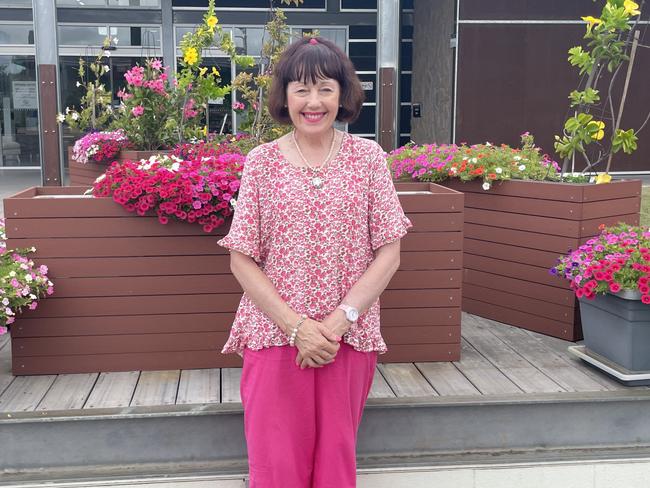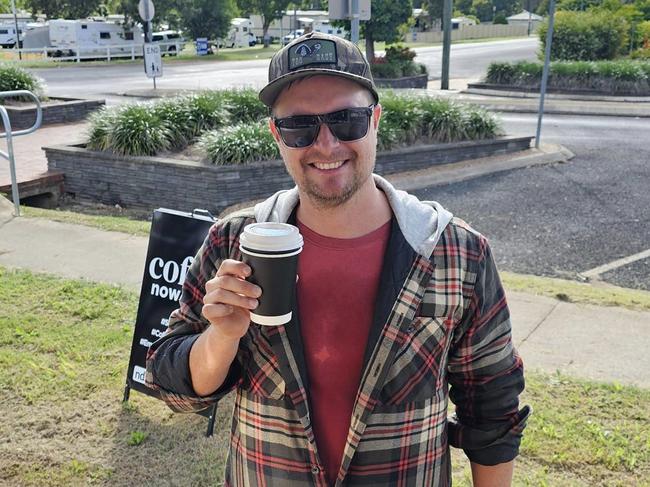‘All for it’: South Burnett residents weigh in on Dutton’s nuclear proposal
The federal LNP’s plan to transform the Tarong Power Station into a nuclear power plant met with general approval from leaders and residents surveyed in the South Burnett on Wednesday, though concerns about safety and nuclear waste were raised. See the reaction, watch the video:

South Burnett
Don't miss out on the headlines from South Burnett. Followed categories will be added to My News.
The federal LNP’s plan to transform the Tarong Power Station into a nuclear power plant met with approval by leaders and residents surveyed in the South Burnett on Wednesday, though concerns about safety and nuclear waste were raised.
Opposition leader Peter Dutton unveiled his plan this week to build seven nuclear power plants across Australia, including one at Tarong near Nanango, and another at Callide.
The strategy would not necessitate the 28,000km of new infrastructure required to integrate renewables into the grid, Mr Dutton said.
South Burnett Mayor Kathy Duff expressed enthusiasm about the potential benefits on Wednesday, noting significant community concern over the widespread installation of wind and solar projects.
State Opposition leader David Crisafulli on Wednesday doubled down on his anti-nuclear stance.

“A lot of the community is very upset with the rollout of renewables,” she said.
Ms Duff also highlighted nuclear power’s zero emissions and the potential for job security.
“Over 60 per cent of surveyed residents think it’s an option worth considering,” she said.
“We need to consider jobs, we need to consider potential growth and opportunities with nuclear.”
Ms Duff said she was aware some residents were concerned with “health and safety issues” around nuclear energy.
“That absolutely needs to be addressed. I’m sure that will be addressed with the whole rollout,” she said.
“I’m definitely pleased that we are on the table for consideration.”
Division 1 councillor Jane Erkens also welcomed the proposal, noting its potential to preserve jobs.
“I am excited that this may mean we will retain jobs in the region, which was a big concern with the scheduled closure of coal-fired Tarong,” Ms Erkens said.
Local opinions were mixed but largely supportive.
IGA produce worker Tony referred to the global success of nuclear plants.
“I’m all for it,” he said.
Nanango businessman Timothy Walsh echoed this sentiment, supporting the nuclear transition “100 per cent”.
“Nuclear energy is the safest form of power per kilowatt hours,” Mr Walsh said.
“There are three main baseload power sources which we can depend on to operate 24 hours a day uninterrupted: coal, hydroelectric and nuclear.
“Only certain geography suits hydro, which most of Australia is not blessed with so you need to pick coal or nuclear.”

Personal trainer and mum Leisa Green acknowledged the long-term need for reliable power but raised questions about nuclear waste disposal.
“Where does it go?” she said.
“Do we just have this big nuclear waste dump in the middle of the nowhere?”
In May, Nanango residents reported receiving a phone survey regarding their views on nuclear energy as the Coalition considered potential sites for nuclear reactors.
Discussions about converting Tarong Power Station to nuclear have been ongoing for years.

In 2019, the Australian Nuclear Association listed Tarong as one of 10 locations in Queensland suitable for a nuclear reactor.
Queensland Premier Steven Miles said Queenslanders would bear the brunt of expensive nuclear plants if it was pursued over his pumped hydro proposal.
“We know that nuclear reactors are four to six times more expensive,” Mr Miles said.
“That means your electricity bill could go up four to six times to fund these nuclear reactors that the LNP wants to build in Queensland.
“And that is not to mention how future generations, my kids, your kids will need to manage dangerous radioactive nuclear waste forever.”
Nationals leader David Littleproud described it as a “proud day” to be handing down what he said was a “vision for regional Australia”.
“Under a Coalition government we will change not only the culture of this country, but leave a legacy for this country,” he said.

A recent CSIRO report identified nuclear power as the most expensive way to generate electricity, not accounting for the long-term costs of nuclear waste disposal, which must be safely stored for at least 10,000 years.
Mr Littleproud argued the report “failed to acknowledge that a nuclear power plant operates for some 80 to 100 years.”
“CSIRO doesn’t know our energy mix that we’ll announce, which will include nuclear power plants running at greater than 90 per cent capacity. That’s how you drive the cost down,” he said.
The report also estimated that building a nuclear power plant in Australia would likely take 16 years.
The Australian Climate Council noted the nuclear industry’s own analysis shows an average construction time of 9.4 years for power stations.
With the Tarong Power Station scheduled to close in 2037, it would be at least 2047 before a nuclear plant could be operational in the South Burnett region.




